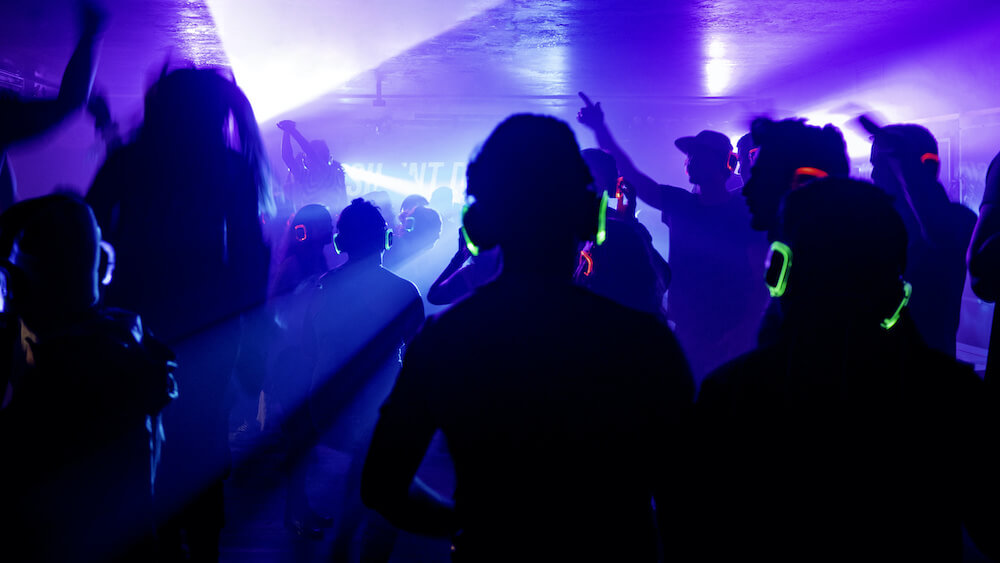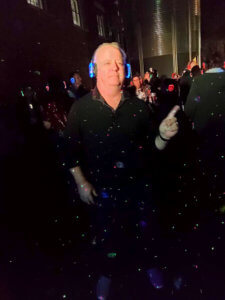
As conference organizers strive to develop more innovative session formats, headphones are being used more often. (Photo Credit Adobe Stock/Cmon)
My wife, Margie, loves to dance. To ring in the New Year and new decade, we went to one of our favorite hangouts. As part of the night’s festivities, we both got to experience our first silent disco, complete with neon headphones.
There were three different genres of music available. If you were on the blue channel, you could be jamming to the latest billboard hits. The green channel was more diverse, with a sampling of favorite dance songs from several decades. Meanwhile, the red channel was rocking out to Bon Jovi’s “Livin’ on a Prayer.” If we saw someone else boogieing down to a song with a different color headphone, we just had to check out their station to see what we were missing.
As conference organizers strive to develop more innovative session formats and bring learning to open-space environments like expo-floor theaters, headphones are being used more often. What began as a novelty has now evolved into a seemingly essential element in our toolkit — but we should use headphones purposefully and wisely.
When They’re Helpful

The author, pictured at a silence disco
The best-use cases for headphones will be in these settings:
Multi-Channel Experiences — Much like my silent disco experience, spaces that offer multiple screens with separate audio feeds are ideal for headphones. We see this deployment often as a solution for overflow seating/viewing. Some larger conferences are creating community spaces that livestream multiple sessions. Attendees can surf concurrent sessions by changing the audio channel and looking at different screens.
Adjacent Theaters — Sometimes we need more breakout space or want to keep the learning as integrated with the expo as possible. When two adjacent theaters each have amplification, disruption will follow. It’s best to equip one of the theaters with headphones.
Mobile Walking Tour — Some conferences conduct walking tours of their exhibit or poster areas. Headsets are ideal for these kinds of on-the-go learning experiences.
When They’re Not
Sometimes we need to look beyond the shiny, new object and go old school.
Conference Sessions — The most effective, full-length conference sessions will include participant discussions and activities. Sessions where you expect learning to occur are not appropriate settings for headphones. Also, it’s awkward for people to ask questions wearing a headphone and using a mike.
Non-Adjacent Theaters — Conferences and trade shows that integrate show-floor theaters with the exhibit booths don’t need headphones. Expos should have some noise and buzz. Work to make these spaces intimate — with seating surrounding the presenter, for example — and use directional small sound systems.
Read the Convene article, “How to Create Good Sound Design in Open-Air Spaces” for tips on using sound systems in unique spaces.
Dave Lutz, CMP, is managing director of Velvet Chainsaw Consulting, velvetchainsaw.com.
